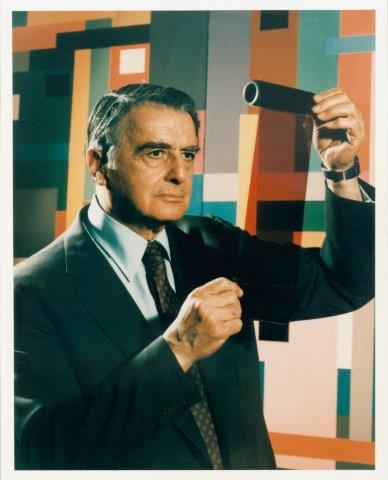FOR IMMEDIATE RELEASE | August 06, 2015
‘Edwin Land and Instant Photography’ named National Historic Chemical Landmark
WASHINGTON, Aug. 6, 2015 —The American Chemical Society (ACS) will designate the invention of instant photography by Edwin H. Land of Polaroid Corporation as a National Historic Chemical Landmark. A ceremony recognizing the award will be held at the MIT Museum (265 Massachusetts Ave., Cambridge, Massachusetts) on Thursday, Aug. 13, at 3:30 p.m. This will be the first ACS Landmark recognized in that state.
In 1943, Land (1909–1991) devised the revolutionary one-step system of photography that would become known simply as Polaroid. The system transformed traditional photography by compressing darkroom processes into an integrated film unit and producing a final photograph in the seconds following the click of a camera shutter.
“The work of Edwin Land and Polaroid’s many researchers is a fantastic example of the transforming power of chemistry in our lives,” says Diane Grob Schmidt, Ph.D., president of ACS. “Instant photography altered the way consumers thought about the entire photographic industry. The act of holding a developed print in our hands immediately after taking it is still astonishing and gratifying, even 70 years after it was first introduced.”
The ceremony will include presentations by Victor McElheny, biographer of Land, and Michael Filosa, Ph.D., former Polaroid scientist and current synthetic chemistry manager at Performance Indicator, LLC. A reception will follow from 4:30 to 6:30 p.m. Renowned Cambridge portrait photographer Elsa Dorfman will display photos taken with a rare 20-by-24-inch Polaroid camera, one of only five worldwide. Sponsors of the event include ACS, the Northeastern Section of the ACS (NESACS), and the MIT Museum. Preregistration is required (http://www.nesacs.org).
The American Chemical Society established the National Historic Chemical Landmarks program in 1992 to recognize seminal events in the history of chemistry and to increase awareness of the contributions of chemistry to the well-being of society. Other Landmarks in the region include the separation of rare-earth elements in the early 1900s by University of New Hampshire chemist Charles James and the development of baking powder by Rumford Chemical Works in East Providence, Rhode Island. For more information, visit www.acs.org/landmarks.
Media Contact
Keith Lindblom, ACS
202-731-8821
k_lindblom@acs.org
Jack Driscoll, NESACS
617-680-2016
pidguy@aol.com






